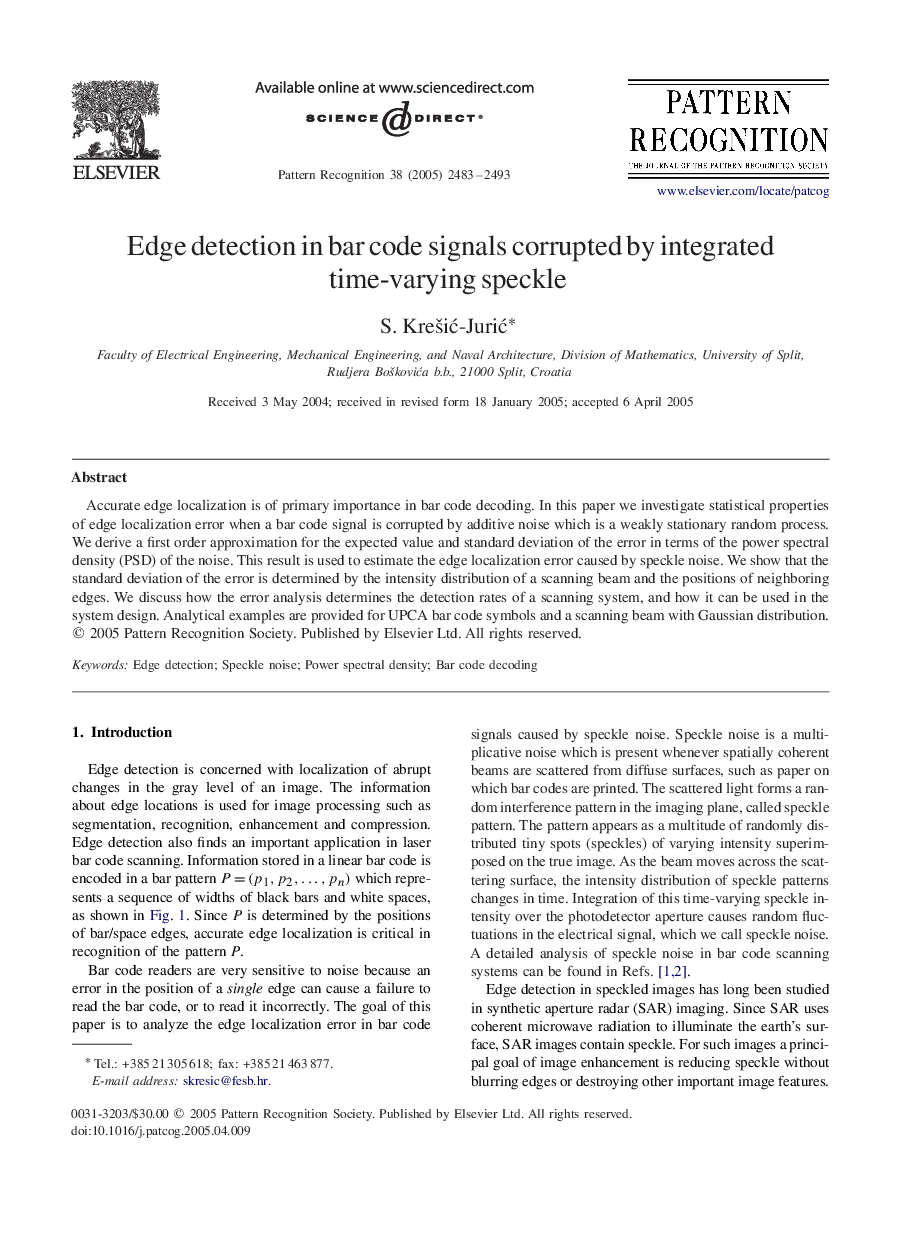| Article ID | Journal | Published Year | Pages | File Type |
|---|---|---|---|---|
| 533851 | Pattern Recognition | 2005 | 11 Pages |
Accurate edge localization is of primary importance in bar code decoding. In this paper we investigate statistical properties of edge localization error when a bar code signal is corrupted by additive noise which is a weakly stationary random process. We derive a first order approximation for the expected value and standard deviation of the error in terms of the power spectral density (PSD) of the noise. This result is used to estimate the edge localization error caused by speckle noise. We show that the standard deviation of the error is determined by the intensity distribution of a scanning beam and the positions of neighboring edges. We discuss how the error analysis determines the detection rates of a scanning system, and how it can be used in the system design. Analytical examples are provided for UPCA bar code symbols and a scanning beam with Gaussian distribution.
